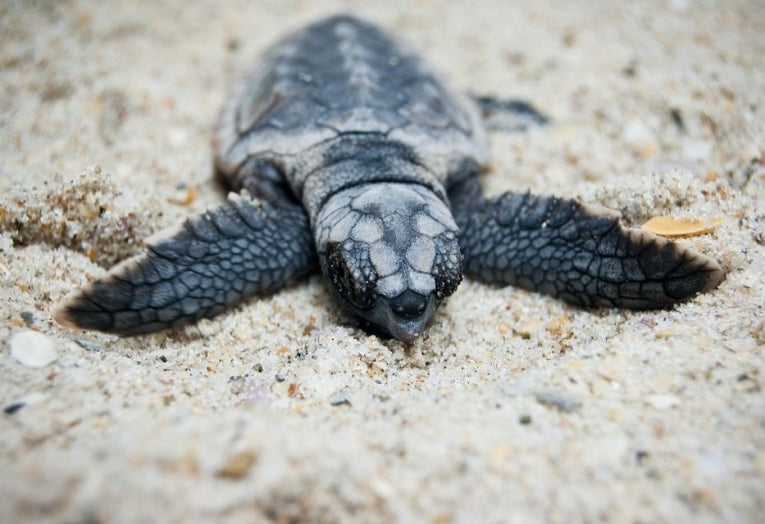As they flop down the beach the young turtle just leaving its egg doesn't look very efficient. It has to evade all those birds and crabs defeat the ambush part of fish and then find somewhere to hide. That progress down the beach obviously has to be as efficient as possible. So in fact the efficiency of those flippers is very good, whether the sand is hard or soft, wet or dry, and now we can prove it.
New technology rarely comes to the mechanics of animal bone and muscle. Nicole Mazouchova, Paul B Umbanhowar and Daniel I Goldman of Georgia Institute of Technology and Northwestern University have made it happen with inspiration for their robot from the hatchlings of loggerheads. They publish today in the inspiring journal, Bioinspiration & Biomimetics.

Credit: © Nicole Mazouchova et al
Above: Locomotion using flippers or fins: top: early tetrapod walkers such as Tiktaalik (image courtesy of Zina Deretsky, NSF) or modern aquatically adapted animals (mudskipper or sea lion; images courtesy of Bjorn ChristianTorrissen and flickr.com: sly06) use fins and flippers to traverse sandy terrestrial environments. Bottom-left: hatchling loggerhead sea turtle. Bottom-right: FBot, a sea turtle-inspired physical model.
As the figure provided shows, FBot (short for Flipperbot) is the result! This piece of "apparatus" overcame the challenge of manipulating the gait of the turtles and operating in field conditions on Jekyl Island in Georgia. It revealed the surprisingly efficient free wrist of the animal is able to improve progress over most sandy conditions. They also used a diagonal gait, which was copied in FBot.
Measuring forces and analysing their use in the robot made a fine model of animal gaits and locomotion. In particular, the FBot and turtle slowed over previously disturbed sand and the experimental material, poppy seeds, which highlights how useful these results are. With a fixed wrist, the limb sinks too far into the sand. The drag defeats the thrusting flipper and the turtle has to start again.
The combination of belly friction, disturbed ground, wrist configuration and limb intrusion into the sand can confuse a newly-hatched animal and throughout eons of time, caused the evolution of a successful beach "walk", but death through exhaustion must always threaten. Locomotion with a probing flipper and an appropriate tilt at the front caused the best progress, with only the dreaded disturbed ground slowing the animal/FBot down.
You can imagine what chaos results from tourists ploughing over these smooth beaches and causing unintentional deaths from tired little creatures. Instead of using flippers in variable ways the hatchlings use one major method of locomotion. Little slip was observed in the efficient movement, and relevant findings were found for many scientific disciplines. We can now add the arthropod RHex, the AmphiBot, the SnakeBot and several others to check out yet more substrates such as leaf litter and snow...










